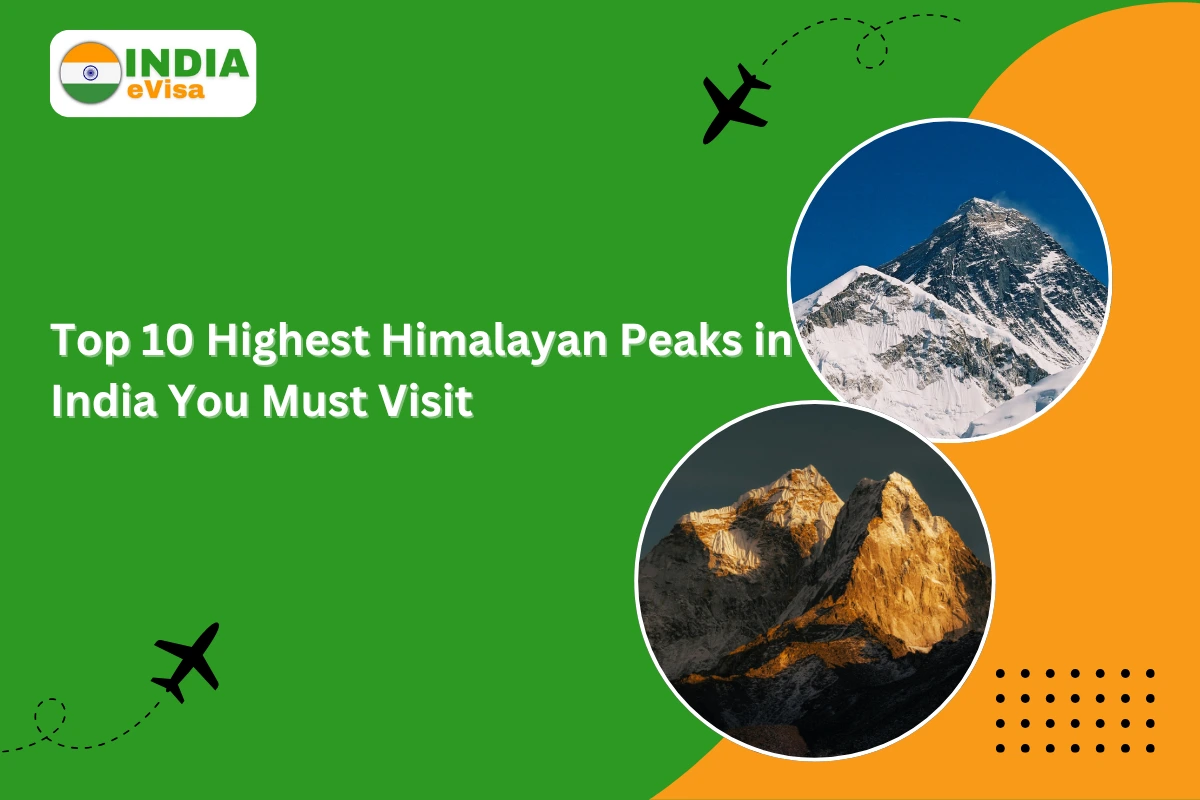Top 10 Highest Himalayan Peaks in India You Must Visit

Dreaming of venturing into a fairy-tale land of snowy giants? India’s highest Himalayan peaks are calling your name! In this guide, we’ll explore ten awe-inspiring summits, weaving in stories, simple explanations, and friendly advice. Let’s make these highest Himalayan peaks feel real and reachable in your mind—no confusion, just clarity.
India’s list of the highest Himalayan peaks includes mighty and sacred giants. Knowing them can make your travel dreams clearer and more exciting.
1. Kangchenjunga – 8,586 m (India’s Highest Himalayan Peak)
Standing proudly on the India–Nepal border in Sikkim, Kangchenjunga is not just one of the highest Himalayan peaks—it is the highest in India. Its name means “Five Treasures of the Great Snow”—a beautiful idea that locals hold sacred . Once thought the tallest in the world, careful surveys showed that Mount Everest is higher. This mountain is deeply spiritual for local people, and climbing from the Indian side is limited to show respect.
2. Nanda Devi – 7,817 m (Highest Fully Within India)
India’s second entry among the highest Himalayan peaks, Nanda Devi is located fully within Uttarakhand. It’s also the 23rd highest in the world. Locals see it as a goddess—the name means “Bliss-Giving Goddess.” To protect its fragile ecosystem and honor its sacred value, India declared it off-limits in 1983, and the surrounding area is now a UNESCO World Heritage site.
3. Kamet – 7,756 m
Third on the list of highest Himalayan peaks, Kamet rises in Chamoli district, Uttarakhand. Lying near the Tibetan Plateau, it stands like a silent pyramid—remote, dramatic, and almost untouched. It’s perfect for seasoned trekkers craving solitude and natural grandeur.
4. Saltoro Kangri – 7,742 m
In Ladakh near the Siachen Glacier, Saltoro Kangri is the tallest in its range. It’s also among the highest Himalayan peaks and is imbued with both adventure and political significance.
5. Saser Kangri I – 7,672 m
Next in line is Saser Kangri I, part of the Saser Muztagh in Ladakh. This is one of the tougher highest Himalayan peaks to climb, reserved for experienced mountaineers drawn to remote, icy challenges.
6. Mamostong Kangri – 7,516 m
Also in Ladakh, Mamostong Kangri is the highest in the Rimo Muztagh subrange. Some say the name means “Mountain of Thousand Devils,” which fits the tough terrain that keeps most travelers respectful and in awe.
7. Rimo I – 7,385 m
Another majestic but often-overlooked peak, Rimo I belongs to the Rimo Muztagh family. It may not make the top ten by height, but it’s among the most enchanting of the highest Himalayan peaks—a secret for those who seek.
8. Hardeol – 7,151 m
Located in Kumaon, Uttarakhand, Hardeol is also called the “Temple of God”. It may be lower than the others, but its spiritual name and calming mountain presence make it special amid the highest Himalayan peaks.
9. Chaukhamba I – 7,138 m
Part of the Garhwal Himalaya, Chaukhamba I is a heart-shaped mountain that stands tall in local lore. It represents the grandeur of the highest Himalayan peaks that shape Uttarakhand’s skyline.
10. Trisul I – 7,120 m
Named after Lord Shiva’s trident, Trisul I is a spiritual symbol as much as it is a mountain. It rounds out our top ten highest Himalayan peaks, standing as a gentle guardian of the Kumaon region.
Understanding the Bigger Picture
When we talk about the highest Himalayan peaks, people often wonder: “What about Everest?” or “What about the k2 himalayan peak?”
- Mount Everest is the highest Himalayan peak in the world, but it lies on the Nepal–China border, not in India.
- The k2 himalayan peak, the second-highest in the world at 8,611 m, is in the Pakistan–China region—not India.
So, our list is focused strictly on the highest Himalayan peaks that are within or on the border of India. That brings clarity and prevents confusion when dreaming or planning.
Why This Matters
By reading about the highest Himalayan peaks, you get:
- Names and heights that anchor your imagination.
- Cultural stories—like sacred reverence for Kangchenjunga (Guarded by local legends) and Nanda Devi (protected sanctuary).
- A sense of geography—from Uttarakhand’s green valleys to Ladakh’s barren heights.
- Real insight, not just numbers.
And if you’re planning a trip? You’ll want to look into India Visa Online services and check your India Visa Requirements early. That way, your travel dreams among these highest Himalayan peaks can become reality—without the stress of paperwork.
Final Thoughts
Let’s recap your journey through India’s highest Himalayan peaks:
- Kangchenjunga (8,586 m) – India’s tallest, sacred, and majestic.
- Nanda Devi (7,817 m) – Highest entirely inside India, sacred, protected.
- Kamet (7,756 m) – Remote and wild, for the brave.
- Saltoro Kangri (7,742 m) – Strategic, rugged, and extraordinary.
- Saser Kangri I (7,672 m) – Icy challenge, climber’s dream.
- Mamostong Kangri (7,516 m) – Untamed wilderness, spiritual name.
- Rimo I (7,385 m) – Quiet beauty, hidden in Karakoram.
- Hardeol (7,151 m) – “Temple of God,” calm and powerful.
- Chaukhamba I (7,138 m) – Beautiful and enduring.
- Trisul I (7,120 m) – Spiritual peak, symbolic and strong.
Now, you’re equipped with knowledge, clarity, and a story-like feel. No doubt remains about which peaks define India’s highest Himalayan peaks. And when the time comes to go, remember to visit India Visa Online and check India Visa Requirements—so your mountain dreams become real adventures.
